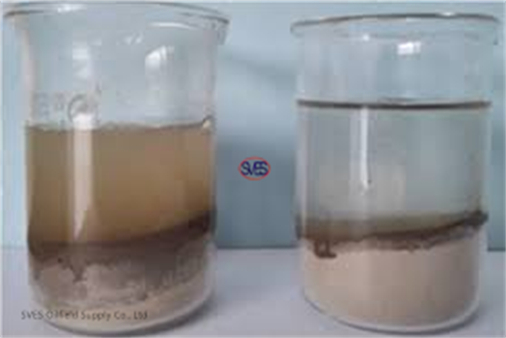
- Home
- >
- News
- >
- What is Drilling Fluid?
- >
What is Drilling Fluid?
2024-07-01 10:00What is Drilling Fluid?
1. Preliminary Formation Period (1888-1928):Drilling Fluid
During the initial stages of rotary drilling, clean water was primarily used as the drilling fluid.
2. Period of Rapid Development (1928-1948):
It was discovered that mud with sand had better carrying capacity than clean water. This led to the development of finely dispersed drilling fluids and the introduction of simple treatment agents.
3. High-Speed Development Period (1948-1965):
The limitations of finely dispersed mud, such as poor resistance to invasion, became apparent. Consequently, drilling fluids evolved into coarsely dispersed systems with calcium treatment and moderate flocculation.
4. Scientific Optimization Period (1965-Present):
With the advent of high-pressure jet drilling, there was a need for low solid phase drilling fluids, leading to the creation of polymer-based, non-dispersed systems. Since the late 1980s and early 1990s, various drilling fluid systems like positive gel, silicate, formate, polyol, and biodegradable fluids have emerged. While these have gained popularity, they have not entirely replaced the mainstream polymer drilling fluid systems.
Functions of Drilling Fluid
In the early stages of rotary drilling, the primary role of drilling fluid was to transport cuttings from the well bottom to the surface. Today, drilling fluid is recognized for its multifunctional capabilities, including:

1. Cuttings Transport:
- Cleans the bottom of the well by carrying cuttings to the surface, preventing repeated cutting by the drill bit, reducing wear, and improving efficiency.
2. Cooling and Lubrication:
- Cools and lubricates the drill bit and drill string, reducing tool wear and extending the service life of drilling equipment.
3. Well Wall Stability:
- Balances the rock pressure on the well wall, forms a filter cake to seal and stabilize the well wall, and prevents contamination of oil and gas reservoirs as well as well wall collapse.
4. Pressure Control:
- Balances (controls) formation pressure to prevent blowouts and lost circulation, and prevents formation fluids from contaminating the drilling fluid.
5. Suspension:
- Suspends cuttings and weighting agents, reducing the sedimentation speed of cuttings and avoiding sand sticking.
6. Surface Settling:
- Allows sand and cuttings to settle on the ground.
7. Hydraulic Power Transmission:
- Effectively transfers hydraulic power, delivering the required power to downhole drilling tools and the hydraulic power of the drill bit.
8. Buoyancy Support:
- Provides buoyancy to the drill pipe and casing, reducing the load on the lifting system during tripping.
9. Formation Information:
- Offers valuable information about the drilled formation through electrical logging and cuttings logging, aiding in obtaining downhole data.
10. Rock Breaking:
- Uses high-speed jets formed by the drilling fluid through the nozzle to directly break or assist in breaking the rock.
